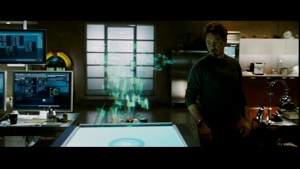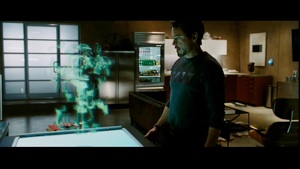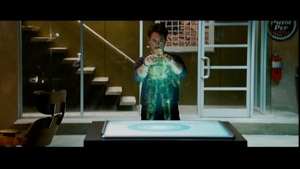Japanese Animation and New Media
Week Six: Chapter Ten: Structures of Depth
Like one-point perspective, exploded projection affords a kind of technical grasp on things, on the world. But it invites a very different kind of technical engagement. One-point perspective tends to order things in a way that stabilizes relations of distance and proximity, giving us the sense of a ‘window on the world’ (especially in Renaissance art) and of mathematically accurate observation and representation of the natural world. Exploded projection invites interaction. It gives a sense of being able to interact with things, to put them apart and put them together, to handle elements, and even to get inside the diagram.
Exploded projection is becoming more common in digital special effects in films. Take the scene in Iron Man in which the hero builds his mecha design on a computer with a sort of 3D version of iTouch. The computer projection of the mecha is an instance of exploded projection. It gives the impression that you can walk around the image and interact with it. When you grab and enlarge elements of the image, it is more like a computer window opening than one-point perspective. The element enlarges for you to use, and then you can move it around and put it back. Exploded projection is not necessarily incompatible with one-point perspective. In a sense, it is as if the vanishing point were at the centre of the object, projecting outward radically, like an explosion. But our technical grasp has shifted fairly dramatically: instead of a window on the world, we have objects that open for us, inviting us to interact with them, disassembling, reassembling and restructuring them.





